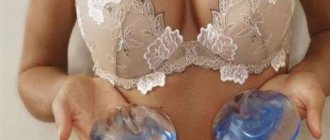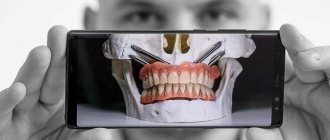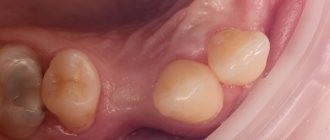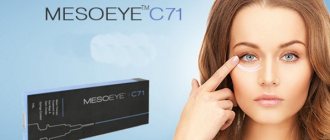Polytech breast implants are produced by the German company Polytech Health & Aesthetics, which has established itself as a manufacturer of high-quality innovative products. The company pays great attention to quality control and safety, and the introduction of innovative developments in the field of medicine. The production of endoprostheses with a textured coating and a surface made of micropolyurethane sponge made it possible, in most cases, to avoid the formation of dense fibrous tissue around the endoprosthesis. This complication leads to deformation of the breast prosthesis and the appearance of pain (capsular contracture develops).
The lineup
Polytech Health & Aesthetics produces several styles of silicone breast implants:
- Round implant (MeMe) – the surface is textured, the projection is central.
- Short oval shape (Opticon) – wide base, shortened height.
- Drop-shaped (Replicon).
- Anatomical shape (Optimam) - narrow base, full height.
Polytech breast implants can be of different projections, sizes, and implant coating options.
Types of endoprosthesis profiles:
- TXS – extra high profile.
- THS – high profile.
- TMS – medium profile.
- TLS – low profile.
Breast endoprostheses have 18 sizes, which allows you to choose the most suitable implant in terms of type and size. The company also produces tissue expanders for reconstructive and plastic surgery, and implants consisting of two chambers with magnetic valves through which saline is filled.
Detailed video review of Polytech Implants
The textured shell has a porous structure that promotes better connection with the tissues surrounding the implant. The slightly concave shape of the implant base is an additional anatomical element that contributes to the ideal fit of the implant to the convex chest.
Thus, Polytech implants are one of the safest and most reliable modern implants. We can confidently recommend them to perform breast augmentation and achieve the greatest satisfaction from the results of augmentation mammoplasty. The surface of the implants can be smooth, textured, or coated with micropolyurethane foam (MPS). It has been proven that MPS implants, as well as textured implants, reduce the risk of capsular contracture.
All implants are certified and have a CE mark, i.e. comply with European standards for medical devices.
In February 2003, the European Commission decided to change the classification of breast implants and transfer them from category IIb in accordance with Directive 93/42/EEC (Medical Device Directive) to the higher category III.
From now on, implants belong to the category of medical devices subject to stricter control. In order to continue selling implants on the European market, Polytech products had to receive confirmation of compliance with category III before March 1, 2004.
Polytech completed this certification and received approval for all breast implants in December 2003. This early confirmation once again proves the high quality of the products, which meet the standards required by the European Commission, of which we can assure doctors and patients. All products are manufactured in Dieburg, Germany
Thus, surgeons have a wide selection of implants that, in consistency, palpation and displacement, imitate breast tissue.
INFORMATION FOR SURGEONS
You can order implants from a warehouse in St. Petersburg by calling +7 921-181-22-77
All materials used in production meet the highest quality standards. POLYTECH implants are filled with highly cross-linked silicone gel with shape stabilization. Thanks to the cohesive properties of silicone gel, it is possible to produce implants of various shapes and projections. During implantation, the type of access must correspond to the size of the implant. The slightly concave shape of the implant base is an additional anatomical element that contributes to the ideal fit of the implant to the convex chest. All implants are divided into 4 styles. MêMe® - implants with a round base and a central projection Replikon® - implants with a round base and the highest point of projection in the lower third of the implant (drop-shaped) Optikon® - implants with a wide base and short height (oval shape) Optimam® - implants with a high narrow base and full height (oval elongated shape) There are 4 options for the projection (profile) of mammary gland implants: Low profile (LP) Medium profile (MP) High profile (HP) Ultra-high profile (XP) The POLYTECH company offers for use an additional parameter D - this the distance between the highest point of the projection and the lower edge of the implant. It determines the relationship between the correct location of the areola and the inframammary fold. Using this parameter helps when installing anatomical and teardrop-shaped implants.
Implant catalog
Features of implants
To fill implants, the German company uses an innovative highly cohesive silicone gel, which has a “memory effect.” This effect allows the endoprosthesis to take its previous shape after compression or impact.
The implant shell is resistant to chemical attack and withstands mechanical stress well. The covering of the prosthesis can be textured or made of micropolyurethane foam, which avoids complications after surgery. The implant shell is highly reliable and safe; it is multi-layered and has a special layer that does not allow the penetration of low molecular weight silicone particles. Materials for the manufacture of endoprostheses undergo preliminary tests for tension, strength, friction, and have a quality certificate.
Polytech implants meet all modern requirements for the quality and reliability of a medical product and have a lifetime guarantee. The company offers a special program for patients - lifelong insurance that guarantees the quality of the product, confirming the safety and high quality of its products. Implants have a passport, which fully describes all the characteristics of the product.
Scandal with implants from scratch
Quite recently, a scandal occurred in the world of plastic surgery. Many countries around the world have refused to purchase silicone implants from the Brazilian company Silimed. Among these countries were the UK and a number of other European countries, New Zealand, Australia, and Russian surgeons partially refused to work with the company until the issue was clarified. It should be noted that Silimed is the largest company in the South American market. In addition, it is one of the 3 largest companies producing silicone implants. The essence of the scandal was that when checking production, microscopic particles of cotton and silicon were found on silicone implants. This caused the suspension of the European quality certificate for implants.
The news and the consequences it caused became controversial. There is an opinion that the scandal occurred due to the light hand of competitors.
The Silimed company began producing silicone implants in the late 70s. In 2012, the Brazilian company, having received approval from the US Food and Drug Administration, took a leading position in the American market, displacing large competitors Johnson & Johnson and Allergan.
Johnson & Johnson accused Silimed of raiding, since the latter attracted many former employees of the former to its side. During the legal proceedings, the Brazilian company won. But the confrontation did not end there.
Information about the presence of sterile microparticles on the implants was indicated in the official report with a note that the particles found did not pose any risk to human health. Moreover, cotton particles are a derivative raw material when creating implants. And their presence on the surface of silicone has been observed since the invention of implants in 1964. It is also worth noting that during plastic surgery, wounds are treated with cotton wool, the particles of which end up in the blood in greater quantities than are found on the surface of the implants.
It was also reported that these particles were found on the surface of silicone from major American manufacturers. In defense of silicon, it is used in large quantities in medicine, for example, in joint replacement surgery. These arguments have been published in articles by famous surgeons and medical scientists.
However, after the publication of the official report, British experts proposed the need to accept customer complaints about Silimed products over the past 10 years. This proposal was subsequently called premature and unfounded.
The Silimed company itself, despite the statement that there are no possible risks to human health, on its own initiative temporarily suspended the production of its products.
Author: Svetlana Sergienko
Subscribe to us to stay up to date with the most important and latest news:
All comments
manager 03/27/2019 at 10:59 am # Reply
Yes, competition among competitors
CancelAdd comment
Polyurethane implants - beautiful breasts without risks and complications
As the popularity of augmentation mammoplasty increases, the number of unsuccessful operations also increases. The problem here is not so much in the low qualifications of plastic surgeons, but in the physiological characteristics of the patient himself. Among the most common complications encountered by patients is implant rotation. We talked about how to prevent such an outcome during repeated operations and why specialists choose polyurethane implants with MD, plastic surgeon, Head of the Department of Reconstructive and Plastic Surgery of the Central Clinical Hospital No. 1 of JSC Russian Railways (Academic Clinic of Aesthetic Surgery) Anvar Shukhratovich Salidzhanov. Corr.: Anvar Shukhratovich, recently they are talking more and more often about repeat mammoplasty. What is the reason for this trend? Anvar Salidzhanov: Today we are seeing a steady increase in the popularity of breast augmentation operations. Naturally, with increasing demand for this type of service, the number of operations with a negative outcome also increases. Polyurethane implants are absolutely safe for the patient’s health! Corr.: Doesn’t this mean that plastic surgeons have become worse at operating? Anvar Salidzhanov: No, that doesn’t mean, since the percentage of complications arising due to the surgeon’s fault is lower than the percentage of complications caused by the physiological characteristics of the body. But these are not the only factors, because complications can also arise due to the fault of the patient himself. Corr.: What is the most common complication after breast augmentation surgery? Anvar Salidzhanov: Among the most common complications are rotation (partial or complete rotation) of the implant and the formation of capsular contracture - a dense capsule of scar tissue around the implant. Corr.: Why does the implant rotate? Anvar Salidzhanov: Experts explain this by the accumulation of interstitial fluid between the implant and the capsule. If a round implant has rotated, many patients do not worry about this, since the aesthetics of the breast are preserved in most cases. But if the anatomical implant turns over, breast deformation occurs. Women cannot come to terms with this, so they decide to have a second operation. Corr.: Surely, there is some way to solve the problem without surgery. Anvar Salidzhanov: Theoretically, there is, but in practice, all attempts to return the breasts to their natural shape end in failure. Pumping out fluid by puncture under ultrasound control also did not pay off. There is a fact that the implant has become slimy; the likelihood that it will re-grow tightly with a capsule is extremely small. Corr.: What has changed with the advent of polyurethane implants? Anvar Salidzhanov: First, let’s talk about what polyurethane is. Of course, we are not talking about industrial polyurethane, but about medical one. Outwardly, it resembles a foam film that covers the surface of textured implants. The polyurethane shell of the implants, like a sponge, absorbs all tissue fluid from the formed bed. Thus, the healing process takes place according to the “dry” type. The polyurethane coating dissolves within several years. According to some reports, polyurethane can be detected in a woman’s body even after 8 years. I would not recommend trusting this information, since no research has been conducted in this direction. Polyurethane implants are absolutely safe for the patient’s health! Corr.: What weaknesses of this type of implants could you identify? Anvar Salidzhanov: The only negative is the rigidity of the implant itself. It is temporary; I said above that the polyurethane coating completely dissolves. To install such an implant, wider access is required. It cannot be installed transnaxillary (through the armpits) and periareolar (through the lower edge of the areola). The most optimal way to install a polyurethane implant is submammary (through an incision under the breast). If the areola is large, then it is possible through circular access. Despite this drawback, polyurethane implants are a complete guarantee of a successful outcome of any operation, including repeated surgery. Corr.: Texated implants cannot provide such a guarantee? We have a limited circle of specialists working with polyurethane implants. Anvar Salidzhanov: Without discounting the possibility of texture, I believe that in cases where there is a risk of capsular contracture formation, or during repeated surgery, polyurethane implants are the most reliable option. In some European countries, polyurethane-coated implants are used even for primary breast augmentation. Corr.: How widespread are polyurethane implants in our country? Anvar Salidzhanov: We have a limited number of specialists working with polyurethane implants, mainly those who mastered their features when the manufacturing company first appeared on the Russian market. After the collapse of the company into two independent ones, each of them retained the technology and now continues to produce polyurethane implants. There are already representative offices of these companies in Russia, which means that the process of their popularization will begin due to their high efficiency in carrying out corrective operations. Corr.: Anvar Shukhratovich, thank you for the conversation. Now our readers who have experienced implant rotation have hope of returning their breasts to their original beauty. Audio interview with Anvar Salidzhanov about polyurethane implants for breast enlargement









